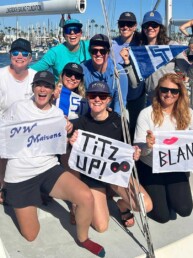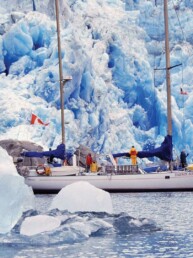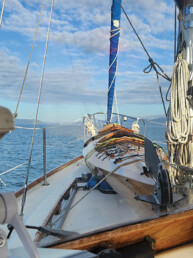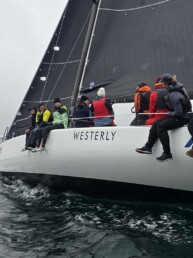Brisk winds and turbulent seas lead to an overboard toilet seat at the end of a passage
The Charlotte Straits can be as calm, serene, and peaceful as any sailor in the dead of night could ever wish for. But, there are times when mother nature shows a heavy hand and severely inflicts her wrath upon this stretch of water between the southern tip of Haida Gwaii known as Cape St. James, and Cape Scott on the northwest corner of Vancouver Island.
One such night in mid-July, I left Cape St. James to port heading south. I at least knew better than to set a course through the narrow stretch of water between the Cape Scott and Cox Island. Instead, to go flirting with albatross and puffins off Triangle Island—the western-most island in the Scott Group—I had to bear off at least 30 degrees and sacrifice boat performance and sailing ecstasy for short bumpy seas off the shallows of Cook Bank that extends some 30 nautical miles off the northwestern tip of Vancouver Island.
A Wild Ride South
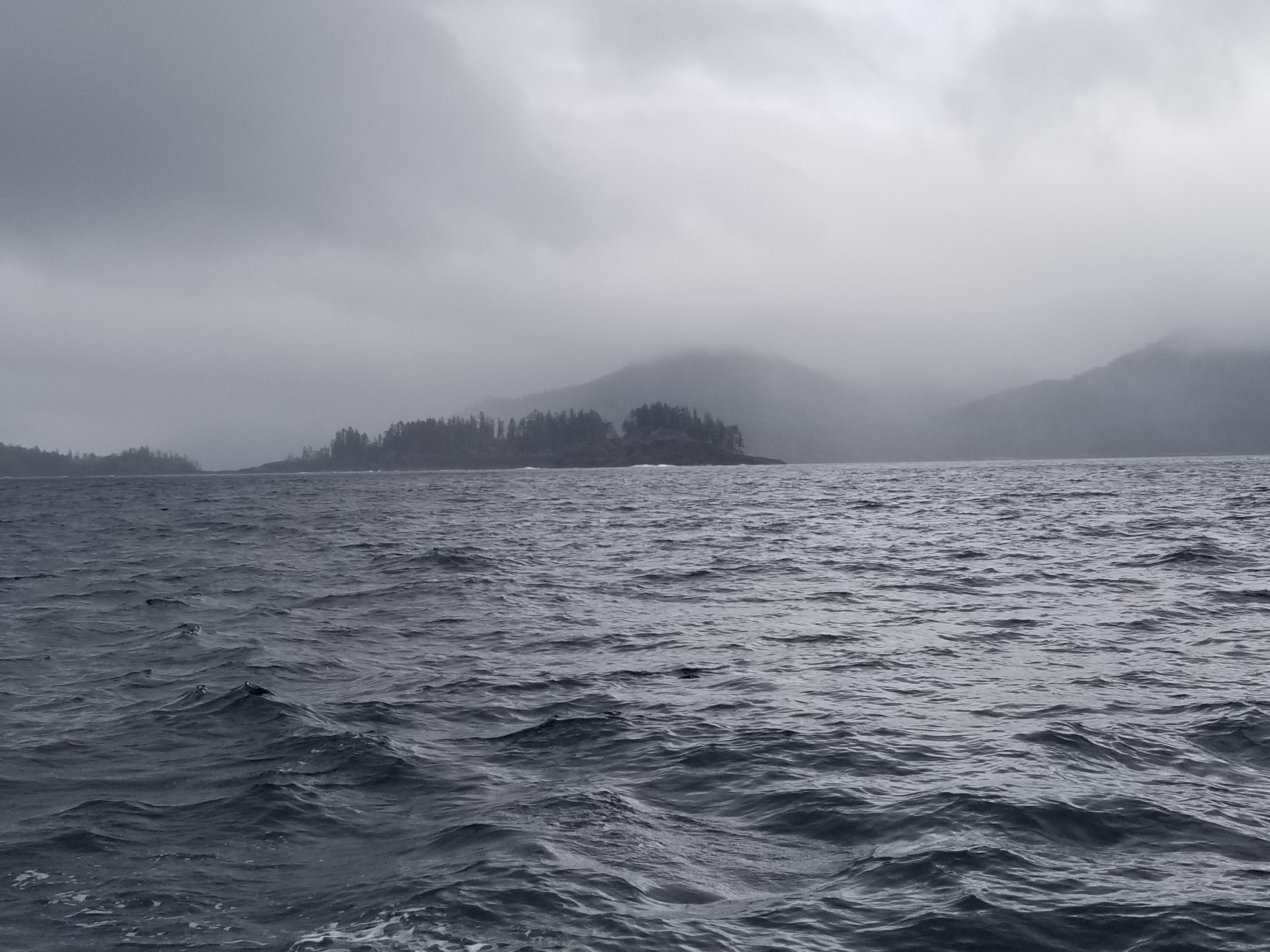
The wind was on my starboard quarter at 20 to 25 knots, gusting to 30 knots in a long following sea—conditions in which Anestina excels. She’s a 36-foot hard chine, mature 30-year-old steel sloop designed and built for ocean passagemaking in Le Havre, France. At home in the moderately high seas, we were smoothly running up and down the long swells with white bearded peaks that gave some light to the black night. Gently rolling over the swell before accelerating for a few moments into the deep dark troughs, onward we went blindly through the starless night, guided only by wind and wave and a constant compass heading held quite tight by Silas, Anestina’s hydraulic actuated pilot.
It was a good, wild blind ride that black night in a brisk northwesterly blow with just a staysail and third reef. Nearing my island destinations, I started facing converging tides and very bumpy seas. Ultimately, though, the fun I was having at the time was worth the fear it produced.
Call of the Wild
Little did I know, the bumpy end to the passage was just the start of my troubles. Mother Nature can also inflict her wrath on other things in life, besides wind, weather, and waves. Not the least of which are the things she makes us do even in the difficult environment of a rocking and rolling small boat upon the ocean.
If you have ever tried to balance on a pitching deck with camera in hand to capture the image of a sea bird skimming the surface of the ocean, you’ll know how difficult it can be. The same degree of difficulty exists when Mother Nature calls for those of us that belong to the male gender and relieve ourselves standing up. Even though we might be wedged against convenient protrusions that help to keep arms and hands free, and even though the aperture of the target is only a short distance, it’s almost impossible not to overshoot. In spite of how hard you try to adhere to the sign ingrained in your mind that says ‘We aim to please, you aim too please’—missing happens. Such is life aboard a boat at sea.
Post Passage Cleanup
Usually after such a trip or when her wrath abates, there is a dire need to clean up the boat. If the circumstance happens to be a safe haven at a marina dock, the cleanup can be more thorough. Fortunately, my safe haven was the calm waters of Winter Harbour. Located on the northwest coast of Vancouver Island, a few miles south of Cape Scott, it was the perfect place to start the cleaning by removing certain items that had become somewhat unsavory.
I arrived in Winter Harbour on a reasonably nice day—a little cloud, a little sun, and just an inkling of a short rain squall that passed over the bay in a few minutes. By late afternoon after a 3-hour, well-needed crash sleep to recover from the previous two nights I went to it. My endeavor? To normalize the boats ‘vacu-seal’ head and all the parts that make it a comfortable seat of ease, especially with the luxury of a newspaper to catch up on global goings-on.
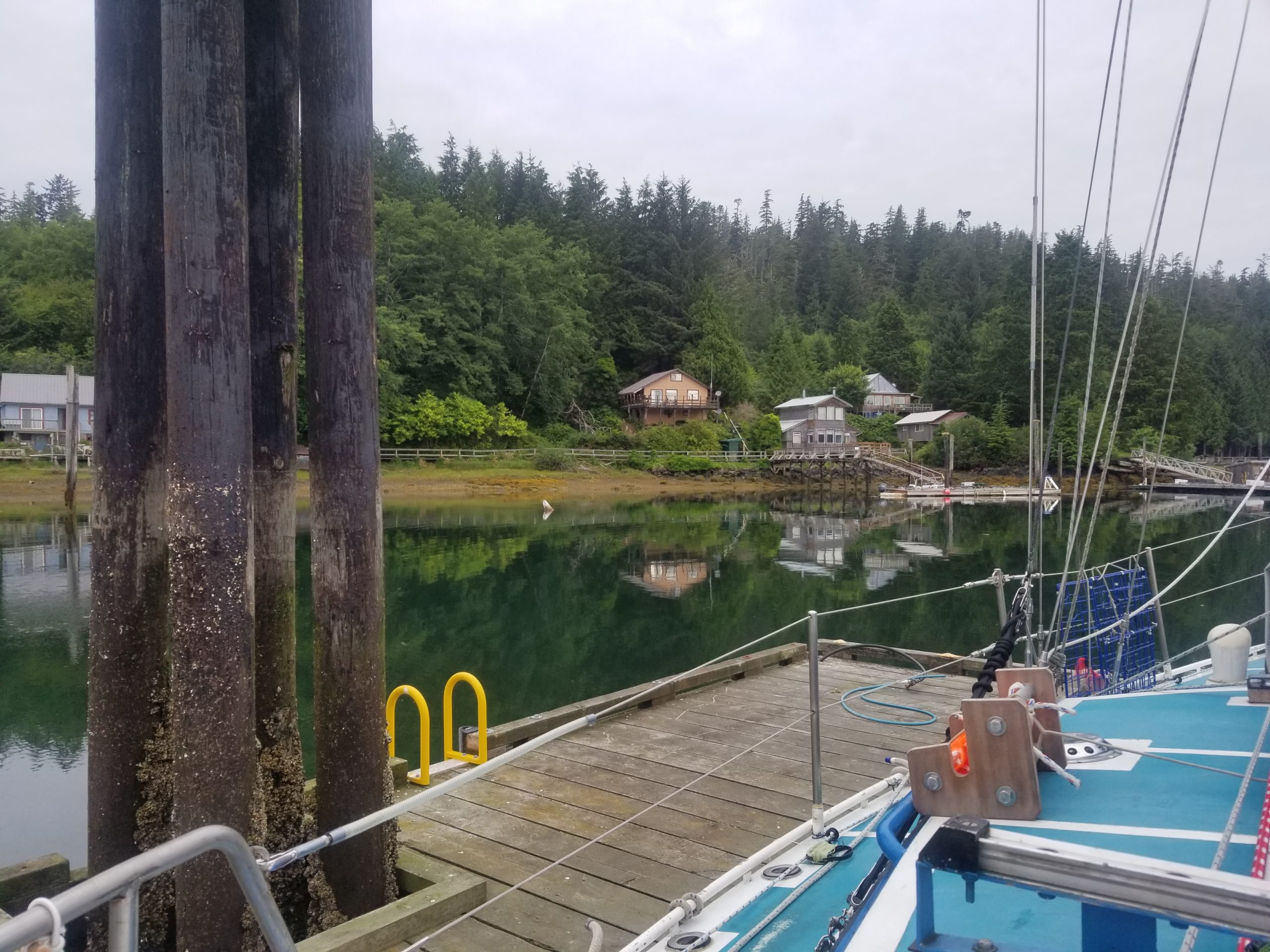
I removed the assorted fasteners that secure the seat and lid, the crucial ‘vacu-seal’ pair, that are a face match with the porcelain bowl, and put them in a container filled with water and a liberal amount of disinfectant.
I then took the seat and lid onto the dock where I’d already connected a hose and high pressure nozzle to the freshwater tap. With a worn-out toothbrush left behind by a former crew, I began to clean all the little nooks and crannies of the pair, followed by a blast of water.
Toilet Seat Overboard!
After both parts where squeaky clean, I placed them, one on top of the other, on the slightly sloping port side of Anestina where I thought they would be secure. However, and this is a big however, I neglected to realize that the face of the seat, in contact with the reverse side of the lid, was like a dinner plate resting on a slightly sloped melting block of ice and needed only the tiniest bit of encouragement to slide. Low and behold, this is what I did and subsequently endured the agony of watching it go over the side and disappear into the depths 28-feet below Anestina’s keel.
In the unlikely event that any far venturing sailor has gone through the trauma of losing their toilet seat in a remote little village amongst the rugged topography of the northwest coast of British Columbia where the availability of most things is almost nil, let alone specific types of marine toilet seats, you’ll know how hopeless the situation can seem.
Nobody Likes a Headless Boat
Now a ‘vacu seal’ toilet is a very simple, trouble free device. However, it is interdependent on the integrity of three surfaces. If one is compromised or simply missing, the whole system is unworkable and the consequence of a headless sailboat prevails. Weighing up all the alternatives, there was non but to somehow retrieve the lost seat from the deep.
After one headless night, I set out on a retrieval mission first thing the following day. I soon discovered there was no commercial diver in Winter Harbour. But, according to a resident villager, apparently there was a man who owned scuba gear. It didn’t take long to find him and he said I could use the gear for a small fee providing I had a diving permit.
The next big task was to find a permitted diver, which turned out to be easier than I could have ever anticipated. It so happened that a boat on the same dock had a crew member who qualified.
A Hero in Dive Gear
Diver Rick was my hero that day. He jumped at the opportunity. Although his permit was up to date, he had not entered the depths for some time and needed the practice.
It was a long preparatory process putting on the gear and doing all the checks that scuba divers have to do. This only added to the anxiety because there was no guarantee the seat would be found. What if it wasn’t? Buckets and big plastic bottles were on my radar screen.
On the first dive, below where it entered the water…no sign. Even after several passes over quite a wide grid. The conclusion? It didn’t go straight down. Flat, light round objects are unlikely to go straight to the bottom, they usually willy-way their voyage to the bottom. This infamous one was no different. And it must have been pulled by the ebbing tide at the instant of disaster. So, now where to look?
Relief, On Several Levels
After input from a few good heads, a prediction of a landing zone was made and, amazingly, proved successful on the first search pass. Diver Rick found the wayward toilet seat a significant distance from where the search began.
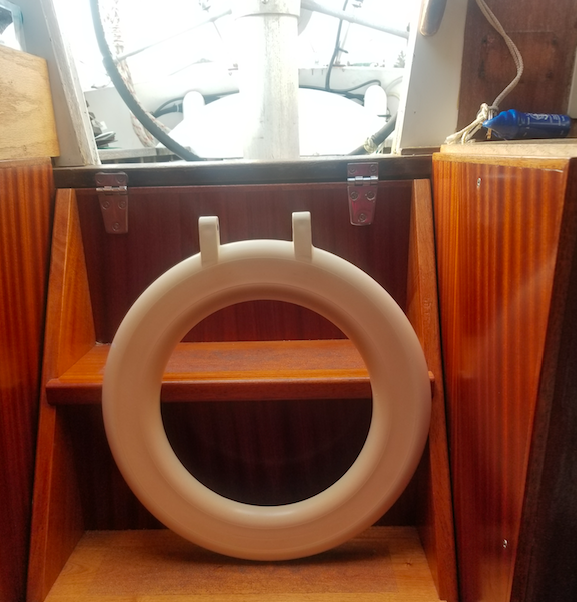
What a relief to have that beautiful seat of ease back home where it belonged, never to be taken out of the boat again without a double knotted tether.
Mike Duff
Mike harbor hopped from Haida Gwaii to Cobo San Lucas, Mexico in 2019, both solo and with crew. He is a senior sailor of some 40 years in the Pacific Northwest and a would be teller of short, tall & true tales of travel on land and sea.

